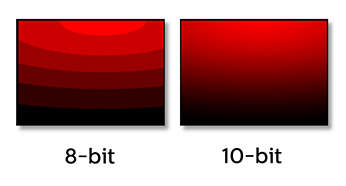Avoid Banding in Gradients – After Effects


Movie containers like: mov, avi or mp4 only can have 8bit, but the preview is in 16bit or 32bit. If you render a image format that supports 16bit or 32bit (preferably exr, tga, tiff) instead of a video you should see no difference to your preview screenshot.
The simplest way to avoid banding is to add grain to your video.
Read more…
- One option is to use generated grain shipped by default with After Effects. Just typing
Add Grainin theEffects & Presets windowand apply this effect to your final comp. Note: A Intensity value of 0.37 or 0.4 should be enough to remove the banding and makes the effect not noticeable. - Another option is to use scanned film grain from real cameras
Video tutorial here: https://www.youtube.com/watch?v=rWAp7E6OLok
and here: https://www.youtube.com/watch?v=UeDi1ezEIts
About Colour Banding from Wikipedia:
Colour banding is a problem of inaccurate colour presentation in computer graphics. In 24 bit colour modes, 8 bits per channel is usually considered sufficient to render images in Rec. 709 or sRGB. However, in some cases there is a risk of producing abrupt changes between shades of the same colour. For instance, displaying natural gradients (like sunsets, dawns or clear blue skies) can show minor banding.



